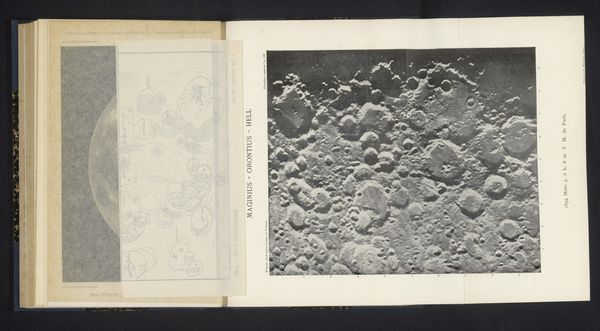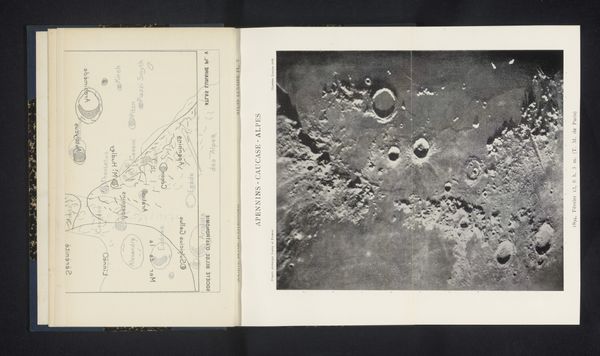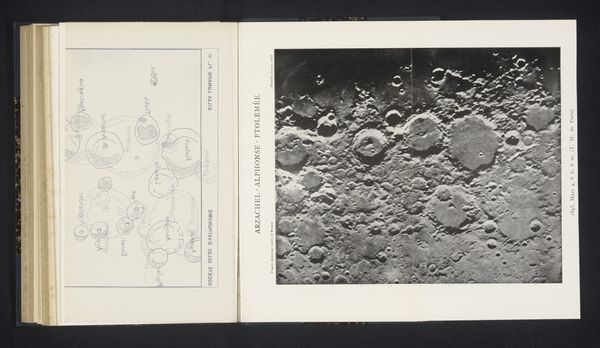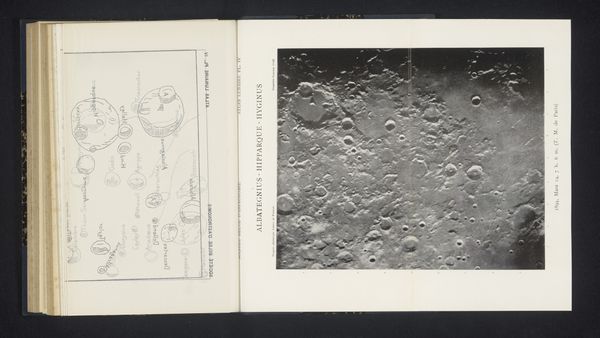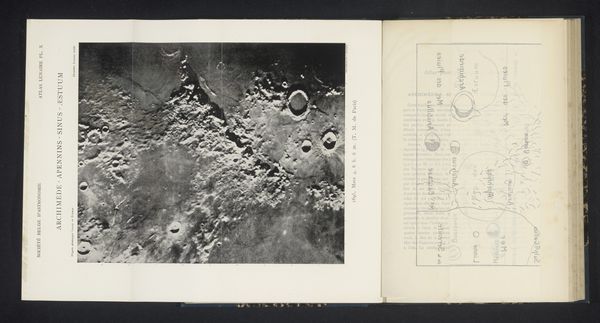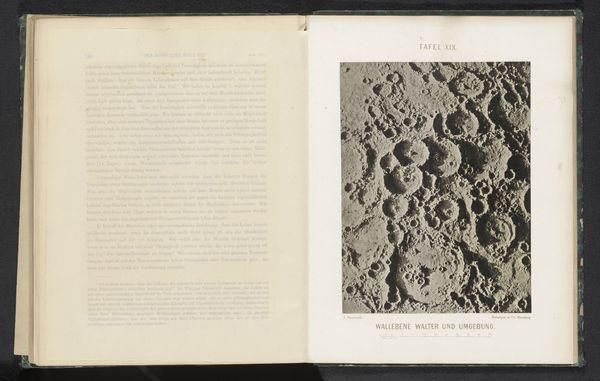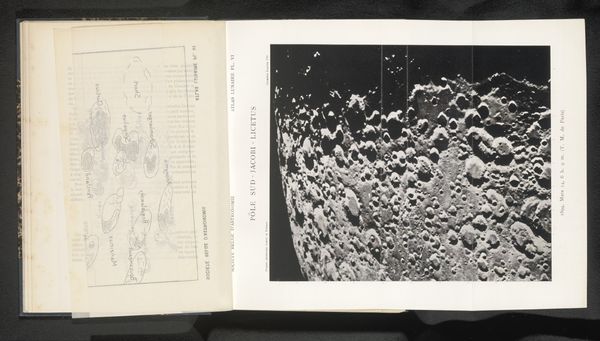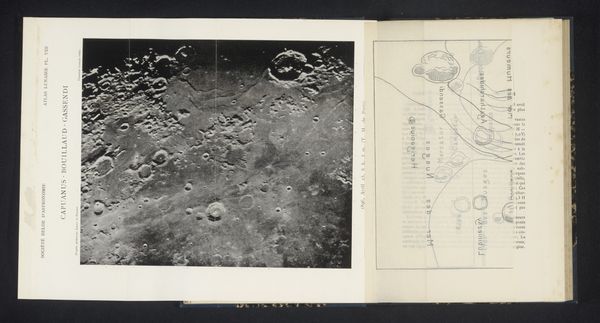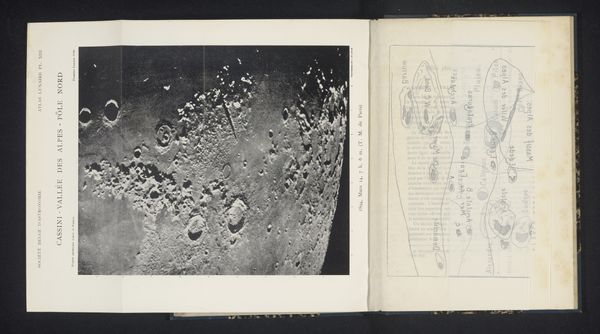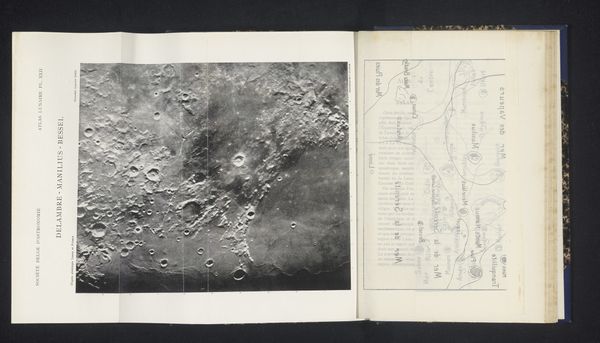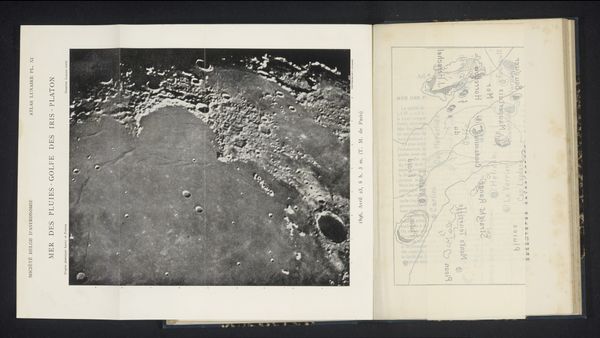
print, photography
#
still-life-photography
# print
#
photography
#
geometric
#
academic-art
Dimensions: height 232 mm, width 192 mm
Copyright: Rijks Museum: Open Domain
Editor: This is "Kraters op de maan," a photographic print made before 1898 by Loewy et Puiseux. It's strikingly stark, isn't it? The lunar surface is riddled with craters of varying sizes. What jumps out at you in terms of its formal qualities? Curator: Precisely. The interplay of light and shadow defines this piece. Notice how the high-contrast monochrome palette accentuates the texture and depth of the craters. The composition, a dense field of circular forms, almost flattens the image despite the illusion of three-dimensionality created by the shading. How does the geometric regularity affect your reading of the work? Editor: I guess it makes it feel almost scientific and clinical. It is a photograph of the moon, but it reminds me a bit of abstract art as well. Does the lack of atmosphere contribute to its starkness, in your opinion? Curator: Indeed. The absence of atmosphere allows for a purely formal analysis. The starkness highlights the geometric structures—the circles, spheres, and cones that comprise the craters. Consider how the arrangement and size of these forms contribute to an overall sense of rhythm, a kind of visual cadence. Editor: That's a good point; it does have a strange rhythm despite being what I imagined was totally random! Thank you, I appreciate your taking the time to discuss that. Curator: It was my pleasure. Considering its structure deepens one's comprehension, doesn't it?
Comments
No comments
Be the first to comment and join the conversation on the ultimate creative platform.
